Measuring Distributed Emissions
The NIST Greenhouse Gas Measurements Program supports several projects to improve our ability to measure greenhouse gas emissions from mobile sources, such as cars, trucks, ships, and planes.
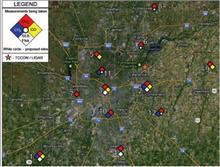
Indianapolis Flux Experiment (INFLUX) – Measuring CO2 and CH4 Emissions in Indianapolis
GOAL: to develop and evaluate methods for the measurement and modeling of greenhouse gas fluxes from urban environments. Determination of greenhouse gas fluxes and uncertainty bounds is essential for the evaluation of GHG mitigation strategies.
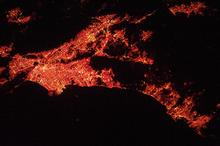
Los Angeles Megacity Carbon Project – Improve Accuracy of GHG Emissions Measurements
GOAL: to reduce uncertainty by jointly improving greenhouse gas emissions data and atmospheric observations. It uses independent and accurate measurements and identifies error sources to diagnose and improve emissions data quality.
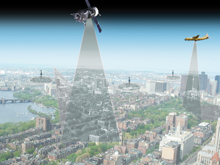
Northeast Corridor Urban Test Bed – Validate Emissions Inventory with Improved Atmospheric Measurements
GOAL: to observe emissions trends in the Washington, D.C., metropolitan areas, the project will use tower surface-based greenhouse gas observing networks coupled with aircraft observations and state-of-the-art boundary layer measurements methods.
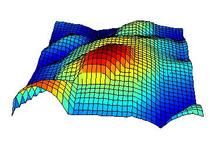
Bayesian Gaussian Process Model for Estimating Greenhouse Gas Surface Fluxes – (A. Possolo, Information Technology Lab)
GOAL: to formulate a Bayesian Gaussian process model that gives a rigorous, geostatistical approach to estimate the distribution of atmospheric trace gases across a city grid, based on spatial greenhouse gas measurements collected by a surface-based observation network.
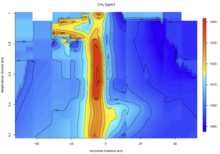
Adaptive Smoothing Methods for Greenhouse Gas Analysis – (D. Samarov, ITL)
GOAL: to provide interpolated values and estimates of uncertainty for various greenhouse gas emissions measurements from large urban centers and geographical regions.
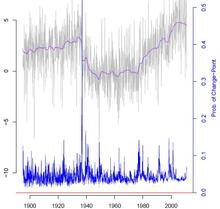
Statistical Methods for Change-Point Detection in Surface Temperature Records – (A. Pintar, ITL)
GOAL: to identify seasonality and artifacts in temperature records that affect our estimated rate of change.
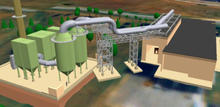
Greenhouse Gas Emissions and Transport – (K. Prasad, Engineering Lab)
GOAL: to develop and demonstrate a measurement capability and methodology to accurately locate greenhouse gas sources and measure their flux to the atmosphere at urban and regional scales.
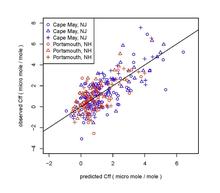
Surrogate Gas Prediction Model as a Proxy for Δ14 C-based measurements of fossil fuel CO2 – (K. Coakley, ITL and C. Miller, NOAA)
GOAL: to develop a proxy model to predict enhancement of Δ14C in atmospheric CO2 due to fossil fuel emissions (Cff) based on inexpensive measurements of anthropogenic trace gases. If successful, apply to NOAA tower network and aircraft measurements.

